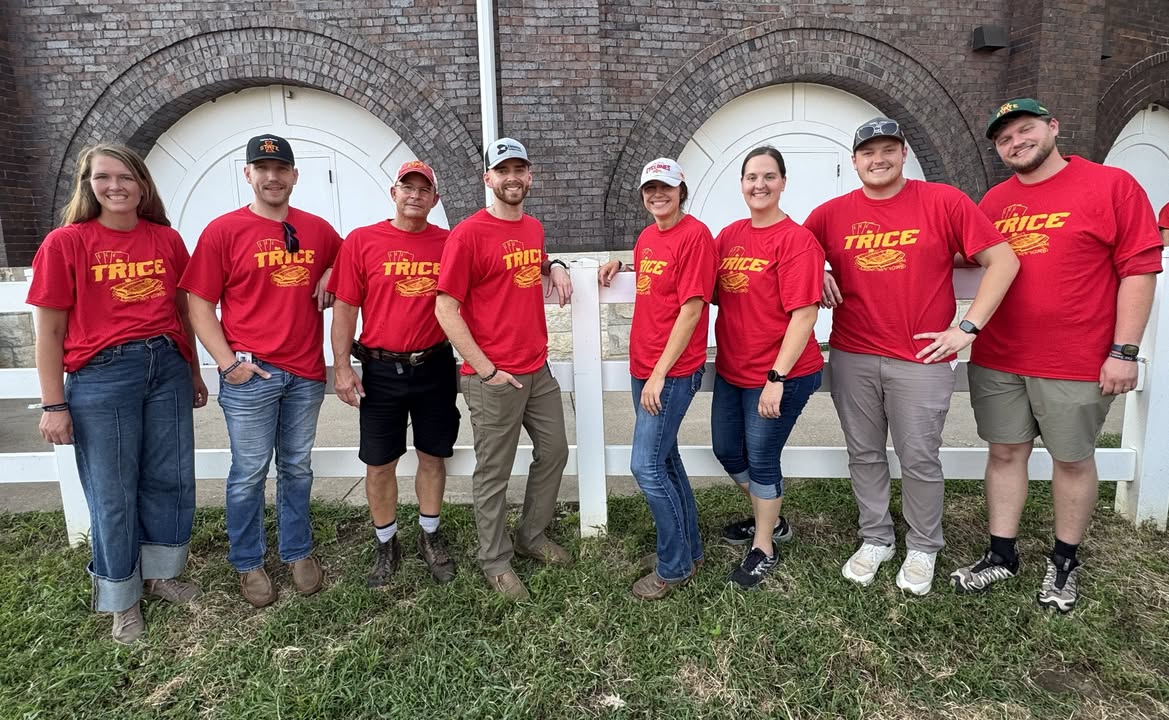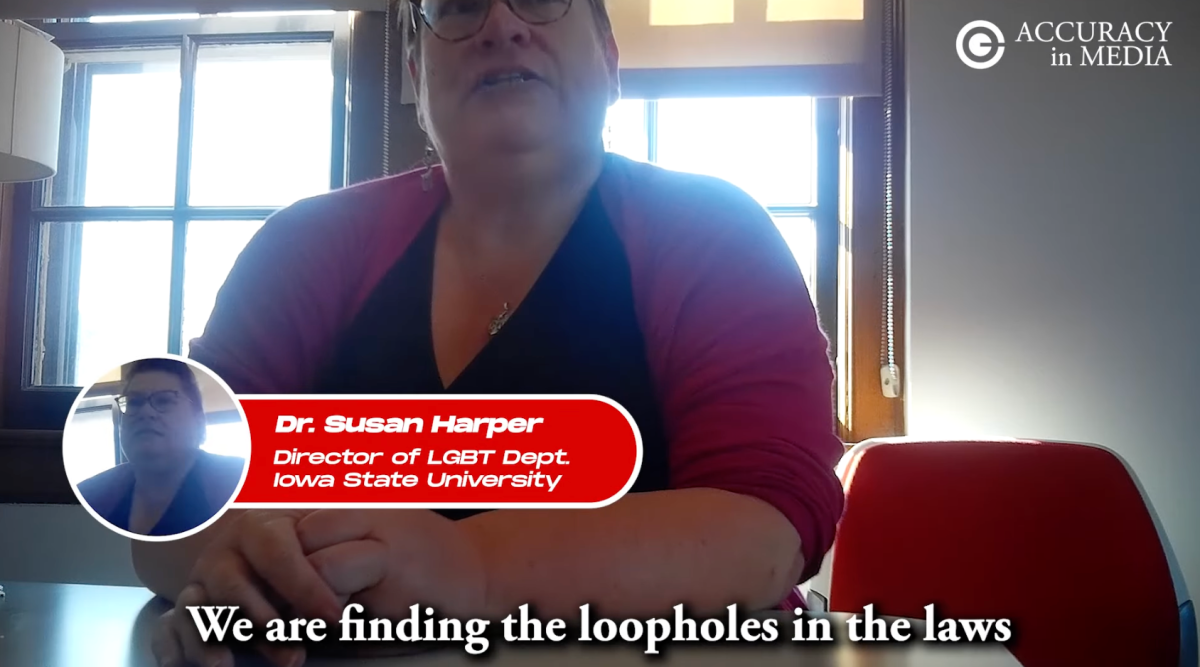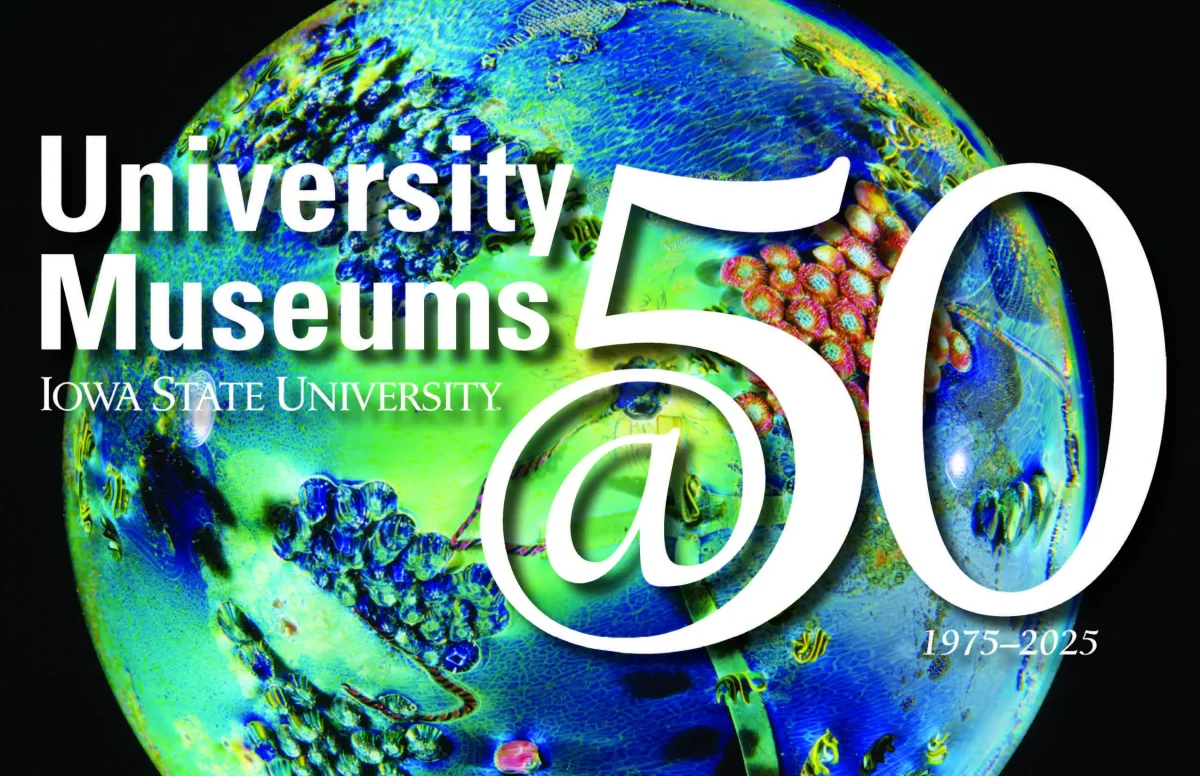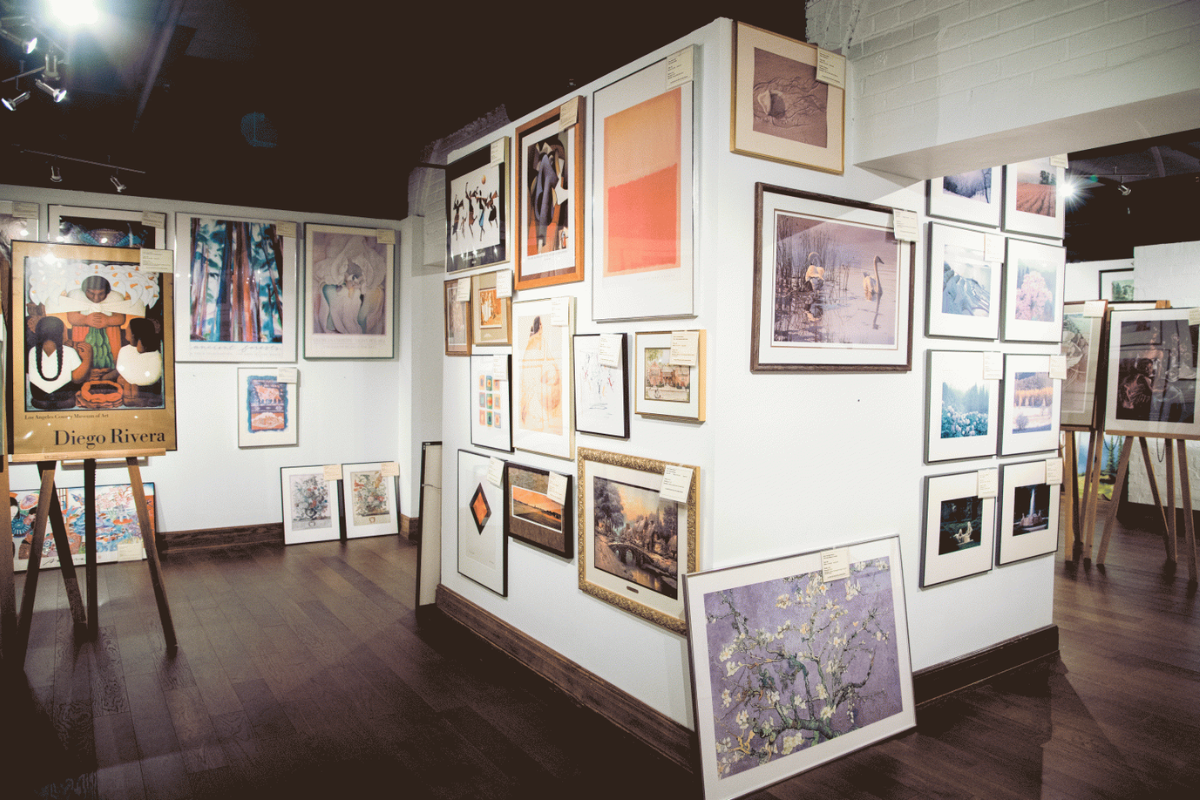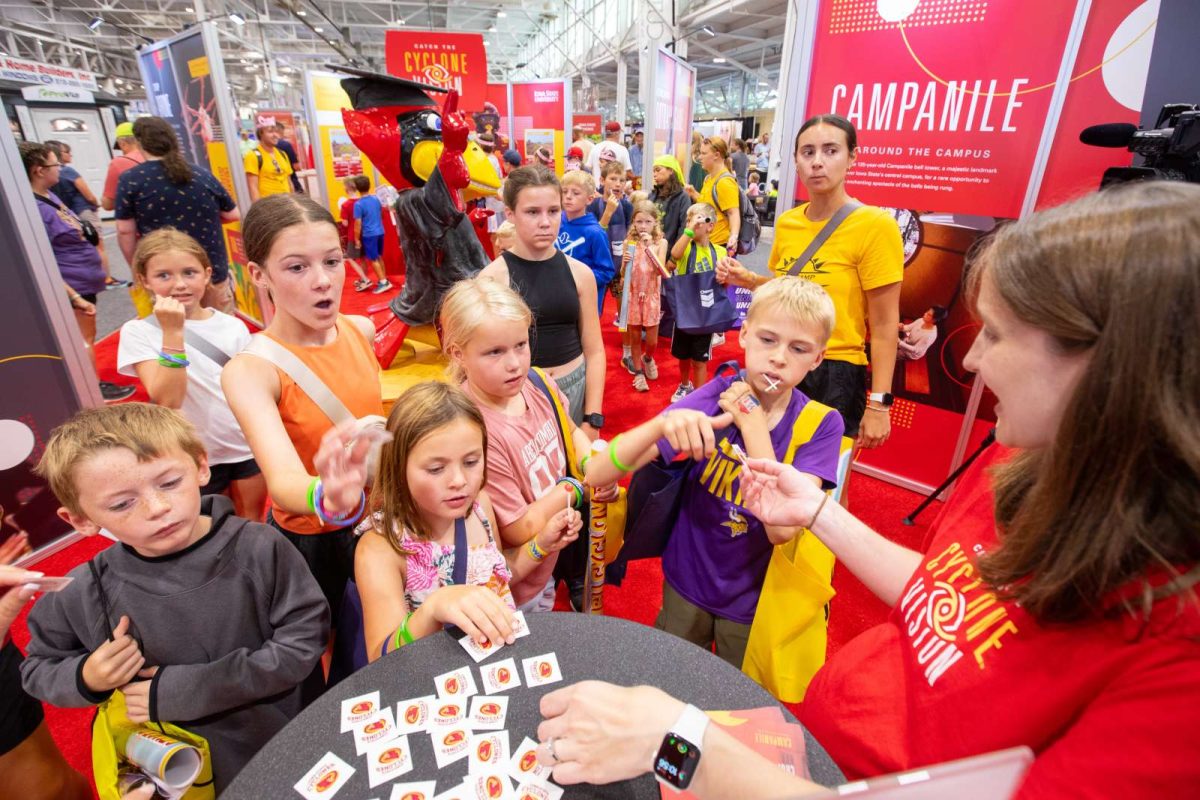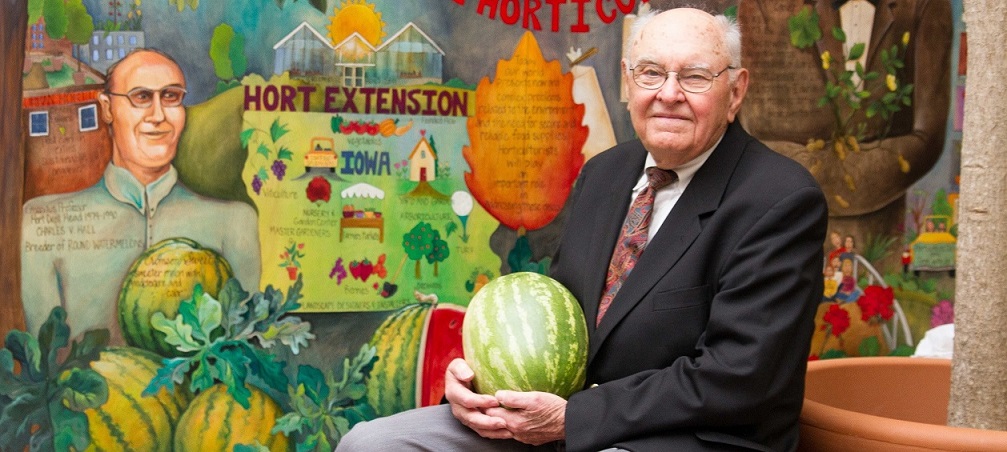A team of Iowa State University veterinarians and fourth-year vet students treated and cared for nearly all of the show animals at the Iowa State Fair.
The veterinarians and the students provided services including caring for sick or injured show animals, checking for show requirements such as ear tags, making sure health papers were valid, collecting urine samples for drug screening and even helping with animal birthing – if necessary.
“It’s just about anything that has to do with animals,” Dr. Rachel Friedrich told the Voice.
There were roughly 3,000 animals on the fairgrounds each day, Friedrich said. And each day there were between five and 500 requests for veterinary services.
“We probably see 80% to 90% of the animals that come through,” Friedrich said.
ISU veterinary students have worked at the state fair since 2012 as part of ISU’s veterinary field services unit, which provides an array of veterinary services.
Early mornings and hot days for ISU vets and vet students
Veterinary shifts started in the early hours of each day of the fair — which ran Aug. 7 to 17 — and ran late into the night, covering 12 to 18 hours each day.
The 11-day opportunity counts toward the students’ clinical rounds — but it’s a much different experience than the typical rounds veterinary students make in their fourth and final year of veterinary school: It was faster, more chaotic and much hotter.
“It’s a different pace to the environment,” Friedrich said. “Everything that we’re doing here has a fast pace to it. There’s high stakes involved with it, too.”
Each day typically began with medications for the animals — such as an anti-inflammatory that was needed for strenuous events like the fair — and then the team went to work on a long list of requests for service.
“Anybody that needs us can come into our office and request service, whether that’s, ‘Come look at a sick animal,’ or they need us to correct a problem with their health papers,” Friedrich said. “We just go through that as the day goes on, and then as they work their way through the shows.”
Making memories students won’t forget
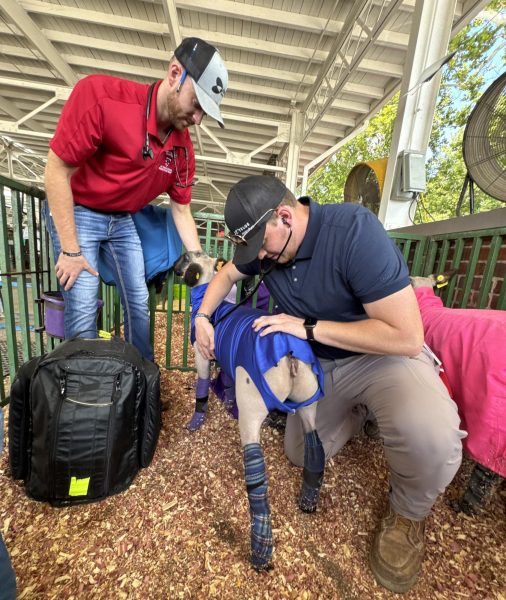
Between the chaos of the fair and the sheer numbers of animals seen, the students who participated in the field veterinary program were bound to make memories they won’t soon forget.
For fourth-year vet student Alek Goll, who grew up in Iowa and showed swine at the state level, there’s one moment he won’t forget.
A steer that had bloated, which can become life threatening if not treated, needed help.
“I got to be the one to actually tube the animal and help that animal out, decompress the air that was built up in that animal’s rumen,” he said.
He recalled the fear on the face of the child working with the steer, but also the excitement and relief once it was done.
“It’s moments like those that — I know it’s not like a crazy story — but it just meant so much to me personally, that he cared so much about that animal, that he was so thankful for what we did for that steer,” Goll said.
Fourth-year vet student Gus Peterson, who’s originally from Minnesota and used to show beef cows — and wouldn’t comment on whether the Minnesota State Fair or the Iowa State Fair is better — won’t forget waiting for five hours to get a urine sample from a horse.
“I got to know that family a little bit,” he said. “And then, the next day, we had to do it all over again with his sister’s horse.”
For both — and for each vet student who got to participate in the field program at the fair — the hard work was worth it.
“It’s just been, honestly, so much fun,” Goll said before the fair came to an end. “We’re all tired. We’re all exhausted, hot, sweaty, ready for the week to be over, but if it could keep going on, I think I’d be pretty happy, too.”
How are veterinary students selected to participate?
A small group of students goes through an interview process each year in September — nearly a year before the fair — so that each candidate can be considered properly.
“It’s been very highly competitive the last couple years,” Friedrich said.
Each student must submit a letter of intent, a resume and three letters of recommendation from within the veterinary college.
The team of veterinarians working the fair selects the six students, sifting through each document, carefully picking who will get to bear the heat, hard work and long hours of the next state fair.
“It’s hard work, it is,” Goll said. “It’s long hours, but it’s been an experience of a lifetime. I’ve made more memories here with the group of students and friends that we have and being able to just kind of give back.”

